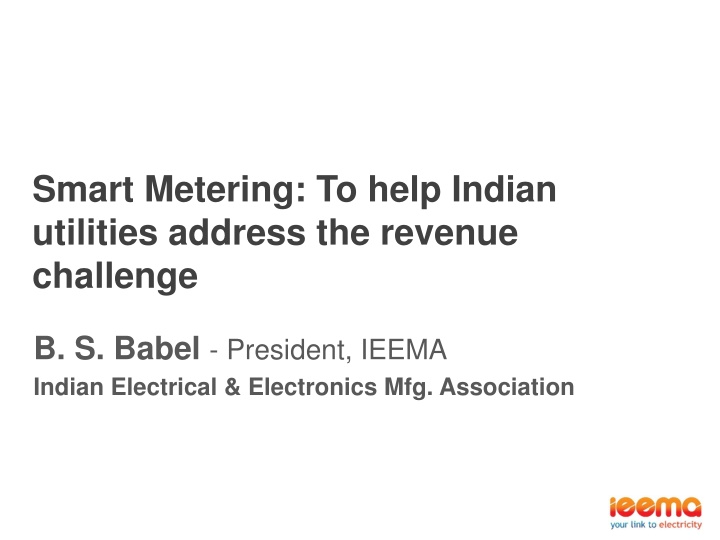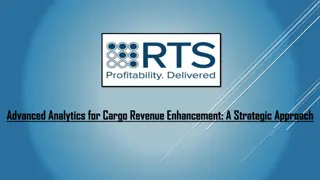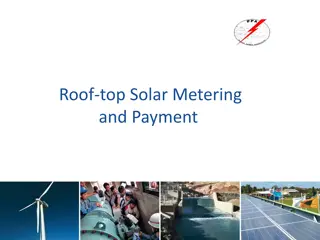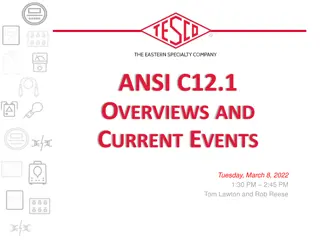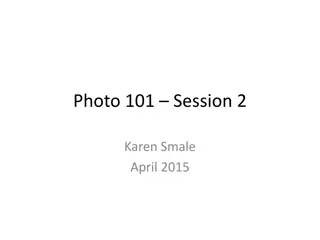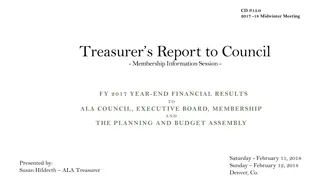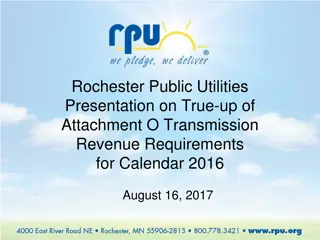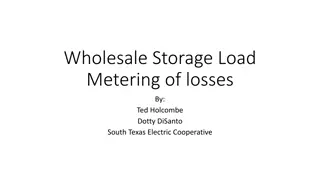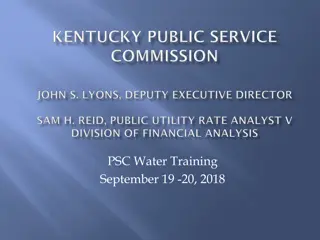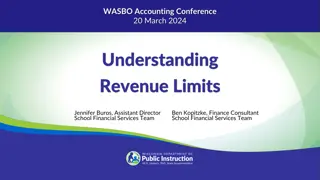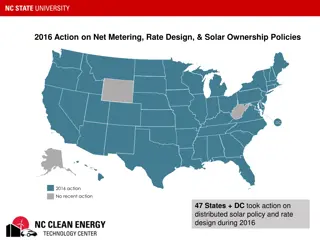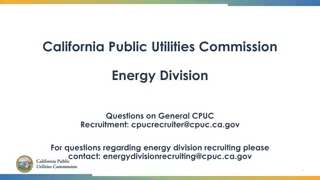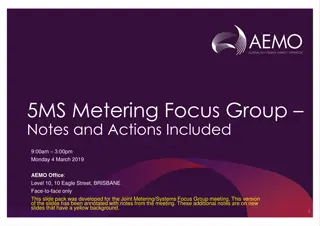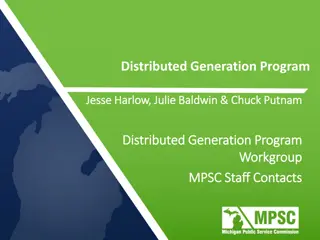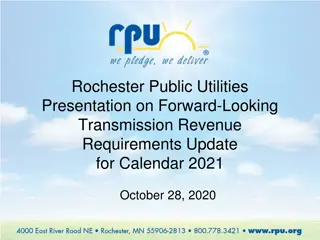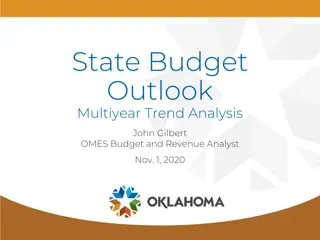Revolutionizing Indian Utilities: Smart Metering for Revenue Enhancement
Smart metering is touted as the solution to India's electricity revenue challenges, aiming to combat power theft and improve distribution management. With the Indian power sector grappling with losses, energy shortages, and high system maintenance, the adoption of smart meters presents an opportunity for efficient billing, better load forecasting, and enhanced revenue protection. Despite facing obstacles in implementation, the Indian metering industry stands at the forefront of global technological advancements, offering innovative solutions to boost the country's power sector.
Download Presentation

Please find below an Image/Link to download the presentation.
The content on the website is provided AS IS for your information and personal use only. It may not be sold, licensed, or shared on other websites without obtaining consent from the author.If you encounter any issues during the download, it is possible that the publisher has removed the file from their server.
You are allowed to download the files provided on this website for personal or commercial use, subject to the condition that they are used lawfully. All files are the property of their respective owners.
The content on the website is provided AS IS for your information and personal use only. It may not be sold, licensed, or shared on other websites without obtaining consent from the author.
E N D
Presentation Transcript
Smart Metering: To help Indian utilities address the revenue challenge B. S. Babel - President, IEEMA Indian Electrical & Electronics Mfg. Association
Indias energy scenario For generation, availability of fuel and India is the 3rd largest renewable energy producer of electricity in the world infusion has been addressed. Additional The world loses $89.3 billion transmission capacity annually through power theft and inter regional capacity is being India loses US$ 10- 15 billion addressed . annually The distribution sector is struggling 240 million Indians live without access to electricity
Both central & state govt. involved in power sector Discoms accumulated losses Energy produced 1200 Twh 70Billion$ Energy shortage 1.0% 240 million consumers Indian Power Sector- an Overview Peak shortage 1.5% Very High losses 23- 25% Low revenue /Per capita use ~1010 kWh Load Growth 6-8%
Info. need for distribution management Disconnections & Reconnections Transfers & Vacancies Customers Managing Credit Customer Relationship Accounting & Payments Collecting Cash Revenue Protection Readings Power Quality Customer Billing Information through smart metering ? Profiles Tariff design Load Forecasting Geography System Expansion System Operation Assets Energy Accounting Distribution Automation Wires System Losses System Maintenance Load Control
Indian discom story Positives: Early adapters of electronic meters for all segments. Meters with high accuracy and tamper detection capability Could not appreciate Changes required in discom processes to convert data to business decisions Many did not build computing and IT system and support team Indian power system conditions. Surges, spikes, over voltage, high temperature, poor installation Social side of power theft Lagging :Moving in circles on meter data collection Impact No details around the drivers and variability of energy loss Outcome, no real benefits out of installing electronic meters for several discoms
Metering Industry Status At par with global technological developments. World s first smart meter jointly developed in India in 1988 World leaders in addressing Tamper & fraud issues Comprehensive design and manufacturing capability in India : Around 25-30 million per year. Indian companies are ready with smart meters and have implemented AMI solutions in Developed and Developing economies. Smart meters exported out of India Around 1/3rdof global Smart Meter /Smart technologies design/Engg. is based in India. Around 700k meters with switches deployed, began a decade ago in the country. Around 5 million meters with various communication links working. Bulk supply points success. Discoms experienced mixed success. few really utilised the data. System integration challanges faced
What is SMARTtoday and in foreseeable future What do we desire from a Smart meter Which provides desired results in quickest possible time deploying appropriate technology at affordable cost for today and tomorrow Key business drivers today and in foreseeable future For Owner/Service provider and for end user What does it take to adopt and grow it . Change management issues System versus standalone equipment Smart meter to AMI to smart grid Journey Smart meter records consumption in intervals of 30mins or less. communicates information at least daily back to the utility for monitoring and billing. enable two-way communication. Provides on line update to the user through web or in home display to help efficient energy usage and reduce bill. Sensor for smart grid..
24x 7 power supply Key Drivers - Smart Metering in India Improved customer services
Value delivery from smart meter Adding communication and connect/ disconnect Smart Grid Planning Reliability Operation efficiency Data Analytics ENGG. switch Revenu e leakage Custom er Service Asset Managem ent Renewable Integration Demand Managem ent Field Crew Managem ent Billin g Meteri ng Meterin g Billin g Utility operations benefitted by adapting Smart Metering Utility operations benefited by Walk by reading
The key challenge for Indian discoms is reducing AT&C losses UDAY, innovative effort to address the problems faced by discoms. It will address the issue of high interest burden and effective power purchase. The elephant in the room is high AT&C losses. Increasing with increased generation UDAY has provision for smart metering and related IT support Let s talk about the elephant in the room
Understanding the root causes of AT&C losses Revenue Losses Non-Technical Losses Commercial Losses Technical Losses Metering Related Commercial Practice Debt Other Unavoidable Losses Management Avoidable Losses Errors & defects Unmetered supplies Won t Pay Data Flows Illegal connections Long Cash Cycle Can t Pay Data Fraud Tamper
Smart Grid pilots experience Smart Gird Pilots 2 years back 14 smart grid pilots started. Focus more on Smart metering RFPs floated for approx. 300k Smart meters In FY 15-16 Orders decided for approx. 150K Smart Meters. Unfortunately, revenue could only be recognized for 5k Meters Issues / challenges Lack of standard specification of meter Selection of communication technology Regulatory support missing SLA not being achieved, field issues etc.. All are new entrants.
Challenge with utilities: Complex meter design Improve revenue and reduce losses : Credit management Load / demand side management Last mile (Distribution) is a constraint and many Discoms are loss making Support of various revenue protection features: High theft Customization based upon utilities specific requirements L-1 buying low initial cost expected Challenges in Indian Contexts Poor electrical system condition due to: High ambient temperature Dusty and humid in many areas Geography & age of the network. Poor installation practices Surges, spikes and voltage variations
Technology alone cannot solve problems People, processes and technology must come together Consider value delivered rather than cost alone Technology Cost effectiveness Processes Total cost of ownership People Sociology of technology Simple & effective Dedicated IT team Transparency in service levels People with good analytical ability Creating multiple payment option Keeping abreast with technology Customer education Results
World wide smart metering projects USA United Kingdom Australia France Quantity 100 million Around 100 USD Quantity 2.9 million 150-170 USD Quantity 35 million 150-200 Euro Quantity 60 million Around 100 USD Cost vs Volume
Key message Act on the root causes of losses. Use cost effective, end to end systems / solutions suitable for Indian conditions Share experiences of successful implementations by various discoms. Use best practice examples. Consider outsourcing metering, billing and collection services where appropriate Procurement should be based on quality and cost after assessing the capability of the vendors. Partner with India based vendors with domain knowledge. Before adopting a new technology address issues with people and processes. Create an organisation for effective revenue management. Create effective engineering cells for monitoring, selecting the right technology to solve the problems. Provide necessary training and exposure. Launch a mass communication campaign against power theft.
IEEMA is committed to partner Must be socially and political acceptable by Indians Indian utilities must be able to run with the processes Must be cost effective Will not be instant or there will be no miraclecures . Sociology of technology is critical. We need to communicate with the masses The solutions are available! And are Made in India
